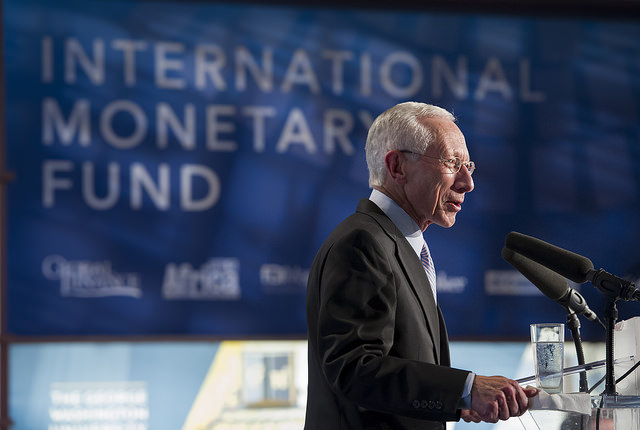
As I was reading today, I ran across a quotation from Stanley Fischer, Vice-Chairman of the Federal Reserve. ?It was from an interview on CNBC in April 2015. ?I went to get the original source, and here it is:
Still, Fischer emphasized that a tightening would be slight.
“We have to ask what will go wrong,” he said. “I say that if we get this in proportion, we’re going to be changing monetary policy from the most extremely expansionary we’ve been able to do in all of history, to an extremely expansionary monetary policy.”
Fischer added that the expected increase of a quarter of a percent would be the lowest rates had ever been if not for the recent move to zero.
This is the same mistake that Ben Bernanke made when he talked about the “taper” back in 2013, and the same error that Janet Yellen is making now. At any given point in time, there is a schedule of interest rates going out into the future that reflects the future path of rates that the Fed controls.??This isn’t perfect because?almost none of us can borrow at those rates, but if credit spreads don’t vary much, movements in the schedule of rates, driven by expectations of monetary policy, affect business actions.
This implies two things:
- Direction matters more than position in monetary policy. ?If expectations have moved from “zero for a long time” to “over 1% by the end of next year,” that is a large shift in expectations, and should slow business down as a result.
- As a result, you can look at the Treasury curve as a proxy for the effectiveness of monetary policy.
On that second point, I have collected the Treasury yield curves since the middle of 2015 on the days after monetary policy announcements. ?Here they are, so far:
|
Maturity |
1MO | 3MO | 6MO | 1 | 2 | 3 | 5 | 7 | 10 | 20 |
30 |
| 6/18/2015 | 0.00 | 0.01 | 0.08 | 0.26 | 0.66 | 1.03 | 1.65 | 2.08 | 2.35 | 2.86 | 3.14 |
| 7/30/2015 | 0.05 | 0.07 | 0.15 | 0.36 | 0.72 | 1.07 | 1.62 | 2.02 | 2.28 | 2.66 | 2.96 |
| 9/18/2015 | 0.00 | 0.00 | 0.10 | 0.35 | 0.69 | 0.97 | 1.45 | 1.83 | 2.13 | 2.58 | 2.93 |
| 10/29/2015 | 0.02 | 0.07 | 0.21 | 0.33 | 0.75 | 1.05 | 1.53 | 1.90 | 2.19 | 2.60 | 2.96 |
| 12/17/2015 | 0.18 | 0.23 | 0.48 | 0.69 | 1.00 | 1.33 | 1.73 | 2.05 | 2.24 | 2.57 | 2.94 |
You can see the impact of the FOMC tightening out to five years, maybe seven. ?After that, there is no effect, so far, except to say that the yield curve is already flattening, and that the Fed my end up stopping much sooner than many expect — including the FOMC and their “dot plot” which expects a 2%+ Fed funds rate in 2017, and 3%+ in 2018. ?Unless the long end of the yield curve reprices up in yield, there is no way those higher Fed funds rates?will happen.
Which brings me back to Stanley Fischer. ?He’s a smart guy, perhaps the smartest on the Fed Board. ?Maybe he meant there was no way rates could rise much for a long time. ?If that’s the case, he may be way ahead of the curve. ?Only time will tell.
